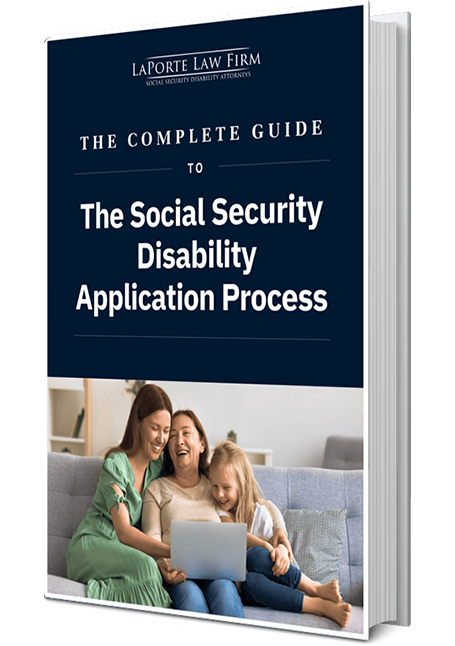
After you become entitled to Social Security Disability Insurance (SSDI) benefits, the Social Security Administration (SSA) periodically reviews your medical condition to determine if you are still disabled. If the SSA determines that you are no longer disabled, your benefits will stop. In this article, we will explain the Continuing Disability Review (CDR) process so you can better understand the way that the SSA will review your continuing eligibility for disability benefits.
What Is the Eight-Step Sequential Evaluation Process?
The SSA reviews continuing eligibility for disability benefits during the CDR process to determine if there has been any medical improvement in your condition. If your condition has improved so that you can now work, the SSA will terminate your benefits. If there has not been medical improvement, your benefits will continue. In this determination process, the SSA follows an eight-step sequential evaluation.
It’s important to know that once a claimant has been found disabled, there is a presumption of continuing disability. When SSA conducts a continuing disability review, there is a presumption that you remain disabled. SSA has to establish that there has been an improvement in your condition to a point where you are now able to work. Therefore, the eight-step sequential evaluation process is more favorable to claimants who have already been found disabled.
Understanding Each of Eight Steps in the Evaluation
Knowing what to expect in each of the steps involved in the CDR evaluation process can help you prepare the necessary documentation and medical evidence to support your case. Understanding these steps empowers you to advocate for yourself effectively throughout the review process.
Step 1: Substantial gainful activity (SGA)
During your CDR, the first step the SSA will take is to determine if you are engaging in substantial gainful activity. If you are, they will determine that your disability has ended. If you are not, the SSA will proceed to the next step of the sequential evaluation.
SGA is a term used to describe a level of work or earnings that involves significant and productive duties, and pays more than the current monthly income limit set by the SSA. It’s a key consideration in (DRs, as it helps determine whether an individual is capable of self-supporting employment. The SSA considers work to be substantial if it involves significant physical or mental work activities. Work is gainful if done for pay or profit. The main factor in determining SGA is the amount of money you make from the work you perform. In 2024, if you are working and earning more than $1,550 gross per month, you will have engaged in SGA.
Step 2: Your condition(s) meets/equals a current listing
If you are not working at substantial gainful activity levels, the SSA will review your current medical treatment records to determine if any impairments meet or equal a listing in the Listing of Impairments. If it does, they will determine whether your disability continues. If not, the SSA will proceed to step 3.
Also known as the Blue Book, the SSA’s Listing of Impairments is a list of medical conditions that are severe enough to prevent you from performing any substantial gainful activity. The listings contain many medical conditions and are frequently updated by the SSA. Some of the impairments included in the listings are musculoskeletal conditions, respiratory illnesses, neurological conditions, certain cancers, and mental impairments.
Step 3: Medical improvement (MI) since your last decision
At step 3 of the evaluation, the SSA will determine if your condition has had any medical improvement (MI). MI refers to any decrease in the medical severity of your disability since the last SSA decision.
The SSA examines your medical records and may request additional exams or tests to assess your current health status. These records are compared to the signs, symptoms, and findings in the prior SSA decision. Minor changes in any impairment do not demonstrate medical improvement. The SSA must demonstrate that there is a decrease in medical severity of any of the impairments at the time of the prior favorable decision.
If there is medical improvement, the SSA will proceed to step 4. If there is no medical improvement, the SSA will proceed to step 5.
Step 4: Medical improvement relates to the ability to work
The SSA will determine if the medical improvement relates to your inability to work. There two ways that SSA will make this determination:
- If you were initially approved for SSDI benefits because you met or equaled a Listing of Impairment, the SSA will review your record to determine if you still meet or equal that prior listing as it appeared at the time of the last favorable decision. As previously explained, the SSA regularly revises and updates the Listing of Impairments. But during a CDR, they will determine if you meet or equal a listing as it was defined when you were approved for benefits. If you do meet the listing as it appeared before, then medical improvement does not relate to the ability to work. Obsolete versions of the adult listings can be found at DI 34100.000 and DI 34200.000.
- If you were initially approved based on medical and vocational factors, the SSA will compare the evidence in your initially approved file and your current file. If there is no improvement in your ability to perform work-related tasks, then medical improvement does not relate to the ability to work.
If medical improvement does not relate to the ability to work, SSA will proceed to step 5. If medical improvement relates to the ability to work, they will go on to step 6.
Step 5: Exceptions
If the SSA has determined that there has been no medical improvement, or medical improvement does not relate to your ability to work, they will determine if there are any exceptions. If an exception applies, the SSA will terminate your disability benefits and make a finding that disability ceased even if there has been no medical improvement. They will include a finding that there was fraud in the prior favorable determination or prior error in the prior favorable determination. These exceptions are rare.
It is important to note that a failure to cooperate is an important exception that can also lead to a termination of benefits. Even if you are still disabled, if you fail to comply with a request without good cause, your SSDI benefits will end. Therefore, if the SSA sends any request to you, make sure to respond in a timely manner.
Step 6: Severity of current impairment
Steps 6 to 8 are very similar to a regular standard of disability review. At step 6, the SSA will determine if you have a severe impairment and then assess your current residual functional capacity (RFC). Your RFC is the maximum functional ability that you retain despite the combination of all your medical impairments.
If your condition has medically improved and you do not have a severe impairment, the SSA will terminate your benefits. If your condition has medically improved but your condition is still severe, the SSAproceeds to step 7 to determine your RFC.
Step 7: Past relevant work
The SSA will review your RFC to determine if you can do your past relevant work. Your past relevant work is the work you have done in the past five years that occurred prior to the first favorable decision on your claim. Any work you did after you were found disabled is not considered past relevant work.
If the SSA determines that you can perform your past relevant work, they will terminate your benefits. If not, they will proceed to step 8.
Step 8: Other work
If the SSA determines that you cannot perform your past relevant work given your RFC, they will determine if you can perform other work. When determining if you can perform any other work, the SSA will consider your ability to adjust to other work by considering your RFC, age, education, and work experience. If the SSA determines that you cannot perform any other work, your SSDI benefits continue. If the SSA determines that you can perform other work, your benefits will be terminated.
Preparing for Your CDR
When the SSA initiates a Continuing Disability Review, they will mail you the Continuing Disability Review Report to collect information. The report gathers medical information to determine if your disability continues. This form is called the SSA-454.
The SSA will also request medical treatment information to determine your disability. Therefore, it is very important that you continue to receive medical treatment for your disability to document the symptoms and limitations of your disability. In addition, the SSA will ask for information regarding your work background, education, and daily activities. Again, it’s important to respond to the SSA’s request in a timely manner to avoid delays in your case and an unfavorable outcome.
If you would like additional tips for preparing and responding to your CDR, read our article “How to Pass a Continuing Disability Review.” And for more information about CDR and the SSDI application and appeals process, contact LaPorte Law Firm. We are glad to guide you in your journey to securing the benefits you rightfully deserve
FAQs
The SSA will conduct a CDR as often as every 6–18 months or as infrequently as every 5–7 years. The frequency of CDRs is established when the SSA initially determines that you are disabled. It is based upon the nature and severity of your health condition. To determine how frequently your case is reviewed, you can look at your Notice of Award that was issued when you were approved for benefits.
The SSA reviews your medical records to determine if there has been medical improvement. The strength of your medical records can be key to whether your benefits will continue. It’s important for you to continue to receive medical treatment to document the severity of your medical condition.
Additional supportive evidence can be helpful to prove that your disability continues. This can include an explanation of your day-to-day activities. You can also obtain third-party reports from friends or family members who understand the limitations of your disability.
If the SSA determines that there has been medical improvement and your disability has ended, you have the right to appeal. If you believe that your condition has not improved and you disagree with a denial of your benefits, you may seek legal advice to discuss your appeal options. At LaPorte Law firm, our representatives have experience representing claimants on appeal after a termination of their benefits.















